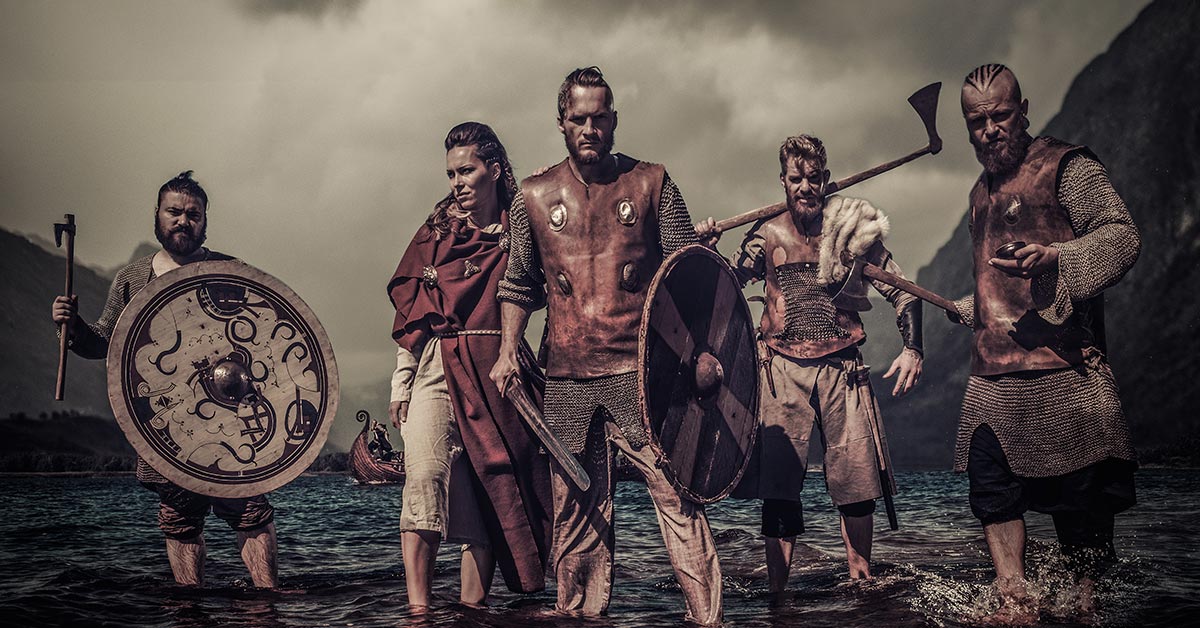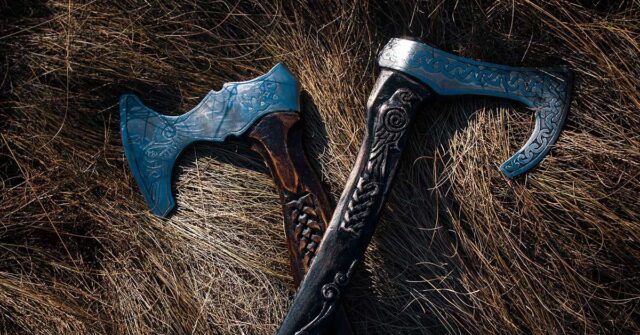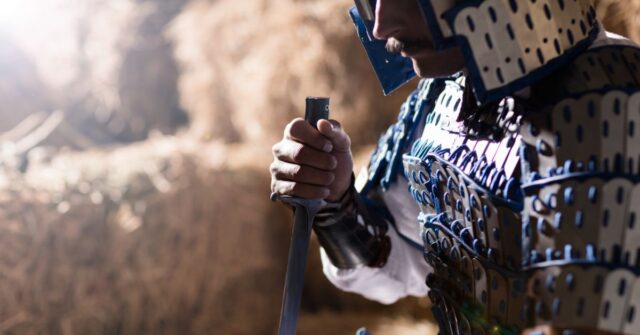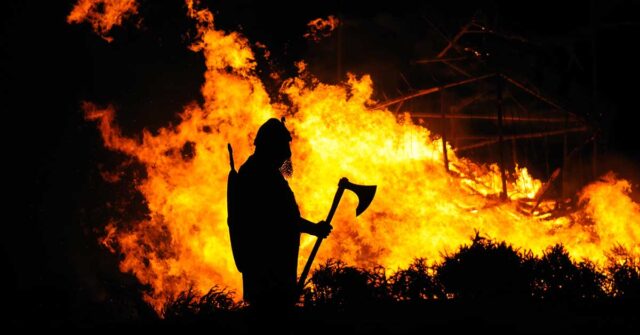Ever wondered if Vikings were the towering warriors of legend or if popular culture has stretched the truth taller than a Norse mast?
Let’s dive deep into history, archaeology, and science to unravel the true stature of the Vikings. Spoiler alert: the answer might surprise you as much as finding out you’re related to Erik the Red!
Introduction to Vikings
Before we measure up our Norse friends, it’s crucial to set the scene.
Vikings, hailing from what is now Denmark, Norway, and Sweden, embarked on their first raid in 793 AD, marking the start of the Viking Age.
But, let’s clear the air first: not all of them were raiders and pillagers. Many were traders, explorers, and settlers. Quite the resume, isn’t it?
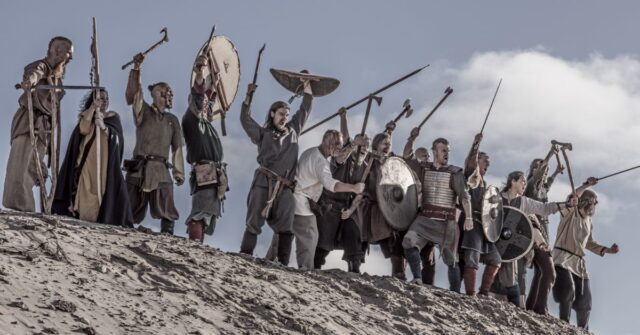

The Viking Age: An Overview
The Viking Age, running roughly from 793 to 1066 AD, was a period of significant transformation across Europe.
Vikings navigated their longships across the globe, from the rivers of Russia to the shores of North America, leaving a footprint far beyond their home shores.
This era wasn’t just about raiding; it was about exploring new territories, trading goods, and cultural exchange (sometimes willingly, sometimes not).
Myths vs. Facts: Understanding Viking Culture
Thanks to Hollywood, Vikings often get a bad rap as horn-helmeted barbarians. In reality, horns on helmets were about as common as Vikings paying their taxes—rare, if ever.
Vikings were quite sophisticated, with a rich culture of storytelling, craftsmanship, and even hygiene. So, before we even talk about height, let’s put those horned helmets in the bin of historical inaccuracies.
Unraveling the Mystery of Viking Stature
So, how tall were the Vikings? It’s a simple question with a not-so-simple answer.
Contrary to tales of giant warriors, the average Viking man stood at about 5 feet 7 inches (170 cm), which was quite respectable for the time.
Of course, the range of heights among Vikings, as determined through archaeological and anthropological studies, does show some variation, much like any human population.
Based on the analysis of skeletal remains from the Viking Age, men’s heights likely ranged from about 5 feet 3 inches (160 cm) to around 5 feet 11 inches (180 cm), with some individuals possibly being slightly shorter or taller.
Women, on the other hand, were generally shorter, with their height range typically from around 5 feet (152 cm) to 5 feet 5 inches (165 cm).
These ranges are estimates and represent the diversity within the Viking population.
Sources of Information on Viking Height
To get a grasp on Viking height, we turn to skeletons, historical texts, and even Viking ship dimensions.
Each of these sources offers a piece of the puzzle, giving us a glimpse into the past that’s as close as we can get without a time machine.
Archaeological Evidence
Archaeology offers the most direct insight into Viking stature. By examining skeletal remains, scientists have pieced together a surprisingly detailed picture of Viking life, including their average height.
Historical Records
While not as reliable as bones, historical records from the era, including sagas and accounts by foreign observers, provide additional context and descriptions of the Vikings, albeit with a grain of salt.
Anthropological Studies
By comparing Viking skeletons to those of other populations, anthropologists have deduced not just heights but insights into diet, health, and even life expectancy.
Spoiler: Vikings ate better than you might think!
Factors Influencing Viking Height
Why were Vikings this tall, you ask? Variability in height would have been influenced by genetics, nutrition, health, and the overall living conditions of the period.
Their protein-rich diet, consisting of meat, fish, and dairy, likely contributed to their stature, a testament to the importance of eating your dinner (even if it’s not your favorite stew).


Genetics and Ancestry
Vikings came from a gene pool that favored sturdy, resilient individuals, capable of enduring the harsh climates of Scandinavia.
This genetic lottery ticket didn’t guarantee towering heights but ensured they were robust and hearty.
Diet and Nutrition
A Viking’s diet was surprisingly varied and nutritious, with plenty of protein, vitamins, and minerals. This balanced diet was crucial for their health and, by extension, their height.
Health and Living Conditions
Despite their hardy nature, Vikings were not immune to the health challenges of the era. However, their active lifestyle and relatively good diet likely gave them a leg up in terms of physical development.
Comparative Analysis: Vikings and Their Contemporaries
Compared to their European neighbors, Vikings were not significantly taller.
However, their stature was impressive given the times, reflecting their robust health and diet. It’s like comparing athletes from different sports; each is fit, just in different ways.
How Did Viking Height Compare to Other Medieval Populations?
When lined up with their contemporaries, Vikings generally measured up quite well. They were taller than many of their counterparts in the British Isles, though not significantly so.
The Role of Environment and Lifestyle
The Viking lifestyle, with its emphasis on physical activity, exploration, and a protein-rich diet, played a key role in their physical development. It’s the original Nordic diet!
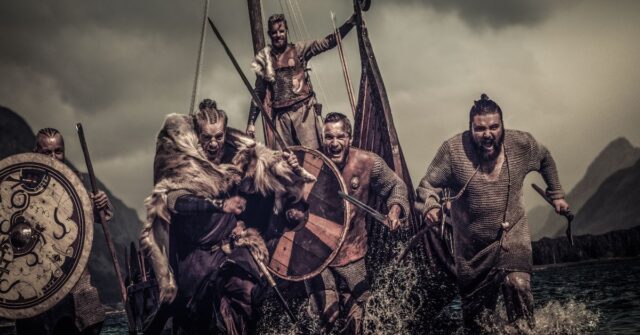

The Height of Viking Warriors vs. Civilians
The idea that higher-ranking Vikings, such as chieftains or warriors of notable status, were significantly taller than other Vikings is a topic of debate among historians and archaeologists.
While there is evidence to suggest that social status could have an impact on nutrition and health, which in turn could influence physical stature, the direct correlation between rank and height among Vikings is not strongly established.
So to answer the question – was there a difference in stature between Viking warriors and their civilian counterparts? The evidence suggests not significantly.
In reality, the demanding physical lifestyle was shared by all, making the average farmer just as robust as the average raider.
Physical Demands of Viking Warfare
Viking warriors were renowned for their strength and endurance, attributes that were necessary for the rigors of battle and long voyages.
However, these traits were not exclusive to warriors; the physical demands of daily life in the Viking Age were rigorous for everyone.
Evidence from Burial Sites and Armaments
Archaeological findings from burial sites show a remarkable uniformity in physical stature among Vikings, regardless of their social role.
While certain elite individuals may have been taller due to better living conditions and nutrition, this is not a universal rule and would not apply across the board to all higher-ranking Vikings.
Also. their armaments and tools suggest a people prepared for both war and peace.
The Evolution of Viking Stature Over Time
As the Viking Age progressed, changes in lifestyle, diet, and interbreeding with other populations likely influenced the average height.
But did they grow taller like the tales of their exploits? The answer is nuanced.
Changes Across the Viking Age
Over the centuries, as Vikings settled in new lands and adopted different lifestyles, slight variations in height and physicality can be observed, reflecting their adaptability and resilience.
Impacts of Migration and Interbreeding
As Vikings mingled and merged with other populations, genetic diversity increased, which could have led to changes in physical characteristics, including height. It’s the Viking version of mixing the gene pool.
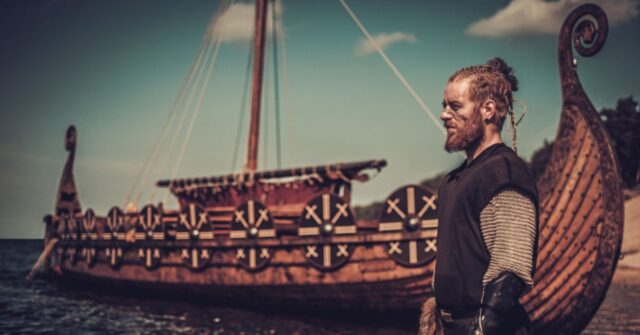

Modern Perceptions vs. Historical Realities
In modern times, Vikings are often imagined as towering, fearsome warriors, thanks in no small part to films and TV shows.
But the reality is more down-to-earth. Vikings were people of their time—tough, resilient, and, yes, about as tall as the average person today.
The Influence of Pop Culture on the Viking Image
While entertainment has done wonders for Viking popularity, it has also skewed our perception of their appearance.
Remember, not every Viking had the physique of a Hollywood actor or the height of a basketball player.
Re-evaluating Stereotypes: Height, Strength, and Appearance
It’s time to adjust our lens on Vikings. Their real strength wasn’t in their height but in their ability to navigate the challenges of their era.
They were as varied in appearance as any group, with a range of heights, builds, and features.
Conclusion: The True Stature of Vikings
In the end, the Vikings’ true stature lies not in their physical height but in their legacy. They were explorers, settlers, and traders who left an indelible mark on history.
So, the next time you picture a Viking, think less about their height and more about their monumental impact on the world.
Further Reading and Resources
Curious to delve deeper into Viking life? A treasure trove of resources awaits, from academic journals to fascinating books and online repositories.
It’s an adventure in itself, minus the longships and sea sickness. Happy exploring!

